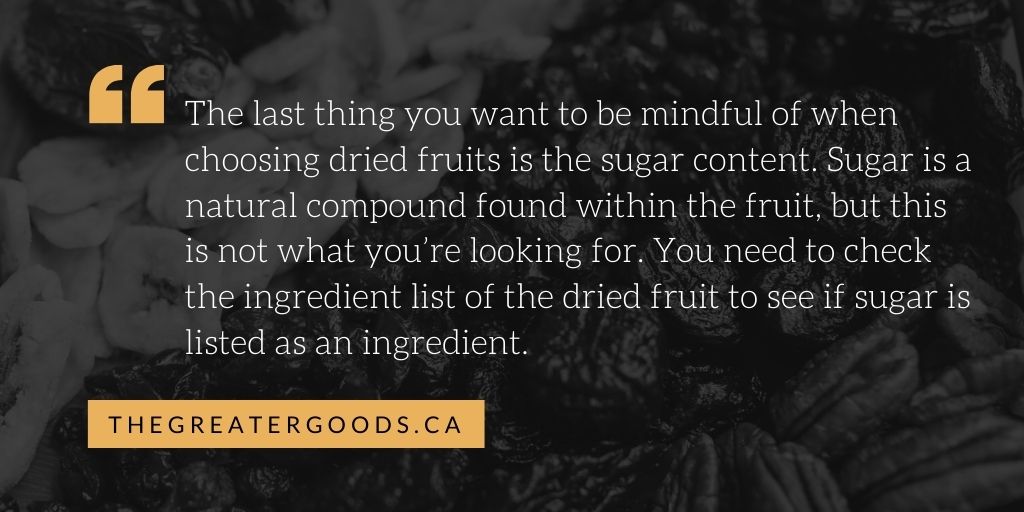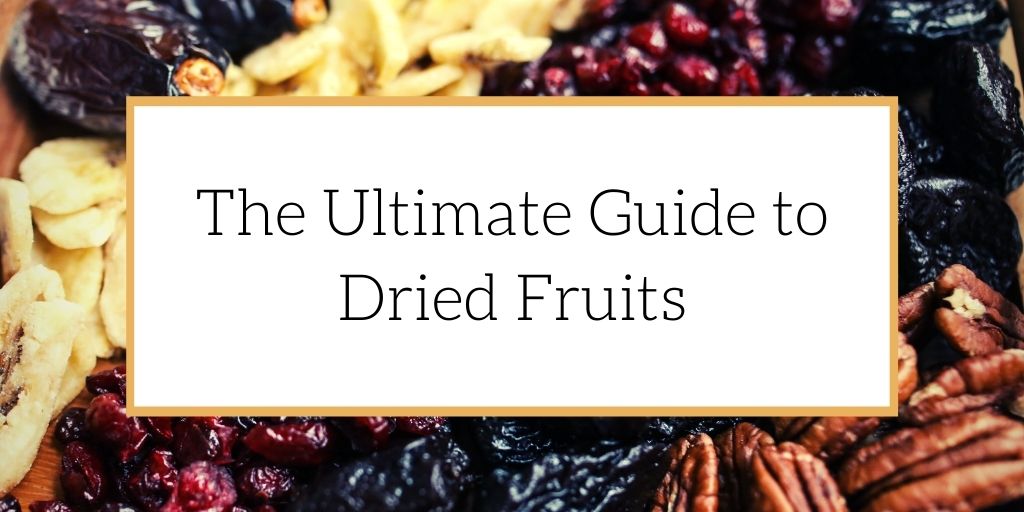Dried fruits are real fruits that have been dehydrated by removing nearly all of the moisture that is found in the fruit. Dried fruits are healthy and contain a variety of vitamins and minerals. Some dried fruits may have additives to keep the fruit from spoiling, turning brown, or losing flavor. It’s important to understand what additives may be added to the dried fruit so that you know if its the right fruit you should choose.
In this ultimate guide, we will help you understand more about dried fruits and why they are a great ingredient to work with.
What are Dried Fruits?
So what exactly are dried fruits, other than fruit that has had most of its water content removed?
The most popular dried fruit are raisins, and they have become such a household staple that we forget raisins are dried fruit. But there’s more to dried fruits than just raisins.
Almost any fruit can be dried fruit, except for fruits with high water content like watermelon and cantaloupe. The best dried fruits are pears, apricots, cranberries, figs, bananas, apples, mangoes, and prunes. Oftentimes, these fruits are naturally sweetened and don’t require additional sweeteners.
Dried fruits often get the misnomer as being high in sugar when it is the loss of volume that gives the fruit high sugar content. The sugar in the fruit was found in the fruit before the water was removed; the only difference is that there is a lot less of the fruit now than there was when it was full of water. This makes dried fruit seem like they have high levels of sugar when it is the volume of the fruit that has drastically reduced.
Shereen Lehman with verywellfit.com explains, “When you compare fresh and dried fruit by volume, then you’ll always find more sugar and calories in the dried fruit. But if you analyze them piece by piece, the sugar and calories will be about the same.”
How is Dried Fruit Healthy?
Dried fruit contains antioxidants, fiber, and minerals. Antioxidants are important because they improve blood flow throughout the body and decrease the amount of oxidation that occurs within the body. This means an overall lower risk of developing diseases related to the heart and cardiovascular system.
Raisins are ideal dried fruits to eat because they have been shown to lower high blood pressure, regulate blood sugar levels, reduce cholesterol, and reduce appetite. By replacing food that is high in sugar with raisins can significantly reduce your risk of developing type 2 diabetes and heart disease.
Adda Bjarnadottir with Healthline writes, “One piece of dried fruit contains about the same amount of nutrients as the fresh fruit, but condensed in a much smaller package. By weight, dried fruit contains up to 3.5 times the fiber, vitamins, and minerals of fresh fruit. Therefore, one serving can provide a large percentage of the daily recommended intake of many vitamins and minerals, such as folate.”
What to Steer Clear from with Dried Fruits
There are many additives that are found in dried fruits because of the way that the fruits need to be preserved when packaged. These additives are mostly sulfites which can be harmful to people with asthma or other respiratory issues.
Potassium sorbate is another food additive that preserves the condition of the food so that it doesn’t spoil or turn colors. Potassium sorbate typically does not cause a reaction on most people, but the FDA must include it on the label for consumers to know it is present.

The last thing you want to be mindful of when choosing dried fruits is the sugar content. Sugar is a natural compound found within the fruit, but this is not what you’re looking for. You need to check the ingredient list of the dried fruit to see if sugar is listed as an ingredient. If it is, you know you have dried fruit that has had sugar added.
Wake Internal Medicine Consultants explains how to know if your dried fruit has added sugars. “The sugars listed on the food label include sugars natural to the food as well as added sugars, so it is difficult to determine if sugar may have been added to a dried fruit just by looking at the grams of sugar on the label. To see if a product has added sugars, look at the ingredients list underneath the food label.”
Book a free consultation today so that we can help you take using dried fruits to the next level for your business. We will be happy to help!
